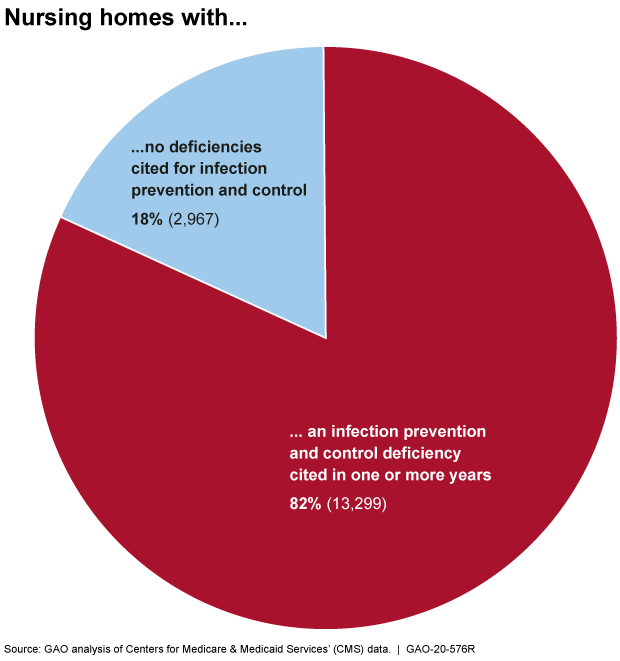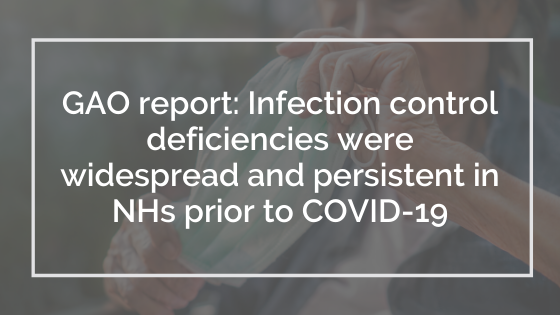In a May 20, 2020 letter to Congress, specifically to Senator Ron Wyden, the ranking member of the Finance Committee, the Government Accountability Office responded to a request “to examine CMS’s oversight of infection prevention and control protocols and the adequacy of emergency preparedness standards for emerging infectious diseases in nursing homes, as well as CMS’s response to the pandemic. This report describes the prevalence of infection prevention and control deficiencies in nursing homes prior to the COVID-19 pandemic. Future GAO reports will examine more broadly infection prevention and control and emergency preparedness in nursing homes and CMS’s response to the COVID-19 pandemic, including recent actions CMS has announced.” This report is entitled GAO-20-576R Nursing Home Infection Control. You’ll also find a 7.25 minute podcast on this website as well.
This 15-page letter addresses the GAO’s review of CMS guidance and analysis of data on nursing home deficiencies cited by surveyors in all 50 states and Washington, D.C., from 2013 through 2017 provided by CMS for a prior GAO report, with a particular focus on deficiencies related to infection prevention and control. GAO also examined the number of nursing homes that had infection prevention and control deficiencies in 2018 and 2019 by analyzing publicly available data from CMS's Nursing Home Compare website. The footnotes on page 2 of this letter are worth reading as well.
“Prior to the COVID-19 pandemic, (GAO) found that most nursing homes were cited for infection prevention and control deficiencies (82% of those surveyed from 2013-2017). About half of these homes had persistent problems and were cited across multiple years.”

Here are some additional highlights found in the GAO Summary:
- Infection prevention and control deficiencies were the most common type of deficiency cited in surveyed nursing homes, with most nursing homes having an infection prevention and control deficiency cited in one or more years from 2013 through 2017 (13,299 nursing homes, or 82% of all surveyed homes).
- About 40% of surveyed nursing homes had infection prevention and control deficiencies, and this continued in 2018 and 2019.
- About half—6,427 of 13,299 (48%)—of the nursing homes with an infection prevention and control deficiency had this deficiency cited in multiple consecutive years from 2013 through 2017.
- In each year from 2013 through 2017, nearly all infection prevention and control deficiencies (about 99% in each year) were classified by surveyors as not severe, meaning the surveyor determined that residents were not harmed.
- Implemented enforcement actions for these deficiencies were typically rare: from 2013 through 2017, CMS implemented enforcement actions for 1% of these infection prevention and control deficiencies classified as not severe.
This is a sobering analysis for both LTC providers and CMS. I’ll be watching for follow-up/further reports as this is a critical issue for the industry, consumers and regulators.
“GAO is not making any recommendations. GAO provided a draft copy of this report to HHS for comment. GAO received technical comments and incorporated them as appropriate.”
Want to keep up with the changing COVID-19 situation in skilled nursing?




